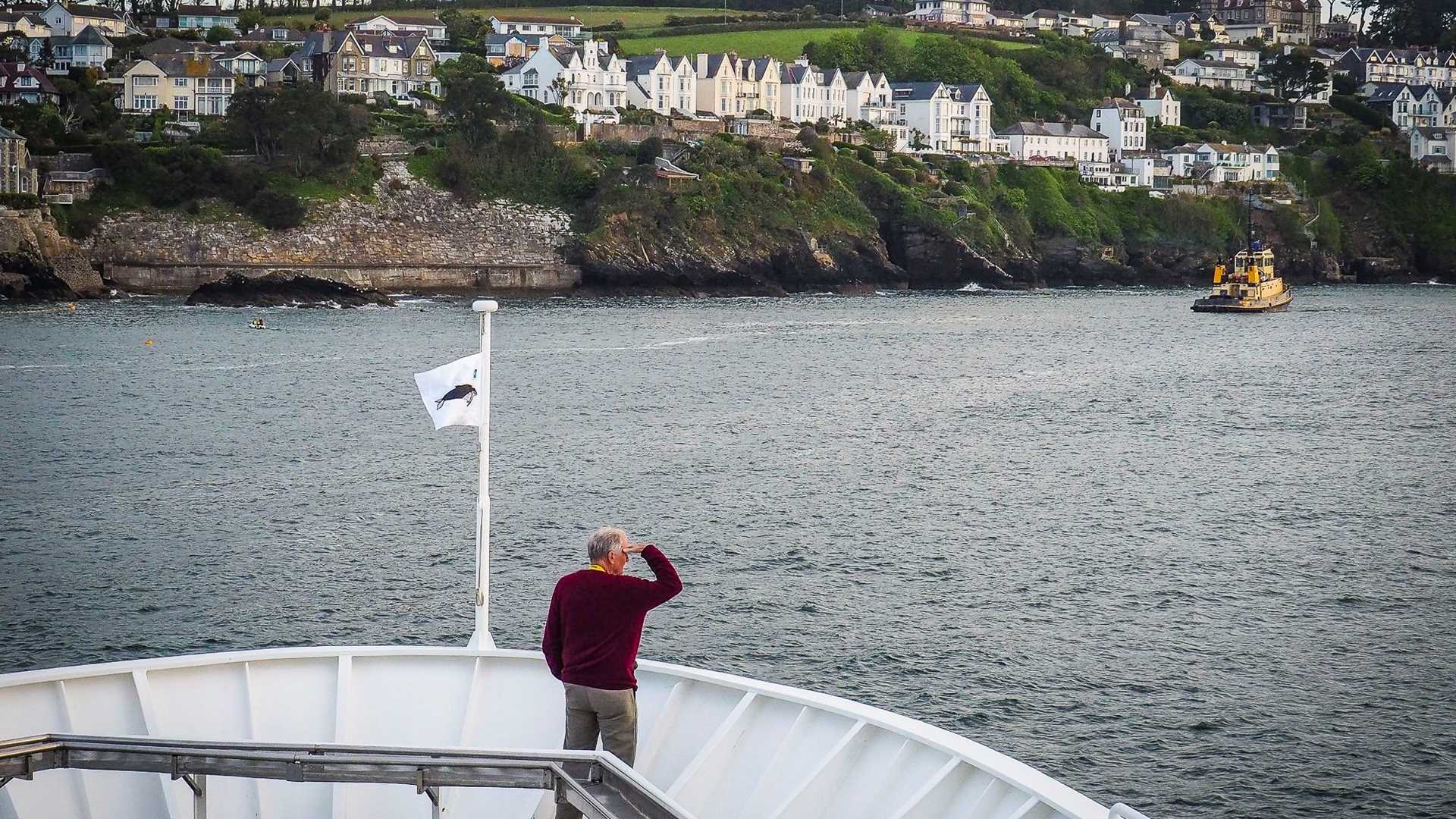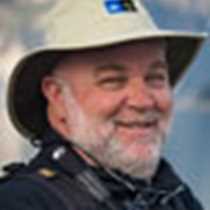After an overnight sail along the south coast of England, we arrived in Cornwall before breakfast for a spectacular entry to the harbor at Fowey, a name derived from the Cornish word for beech trees. These Cornish harbors have nurtured generations of seafarers, fishermen, and sailors in the navy. Geomorphologists recognize these harbors as rias, inundated river valleys that were formed from isostatic rebound, for the coast of south-western Britain has been slowly sinking since the retreat of the ice cap some 10,000 years ago—even as the northwest has been gaining in height. The harbors thus created are deep and sheltered, and they allowed National Geographic Explorer to moor upstream beyond the town, which clings attractively to the steep western shoreline of the estuary.
A visit to the Eden Project was the highlight of the day for many. A disused china-clay quarry up to the end of the last century, it has been transformed into a hugely successful educational and recreational center that promotes understanding of environmental issues on a global scale. Massive covered biomes house flora from contrasting climatic zones and the entire site has been regenerated with vibrant plant life, art installations, and informative exhibits. Some guests continued on tour in the afternoon to visit the Lost Gardens of Heligan while others returned to Fowey for an afternoon of personal exploration. The Heligan gardens were developed by the Tremayne family in the 19th century but fell into decay after the Great War, when so many of the garden staff failed to return from the western front. The gardens, totally overgrown, were rediscovered in 1990 and a slow but thorough process of loving restoration has ensued so that the fine rhododendron, azalea, and camelia collections are now recognized as being of national importance.
A nature walk was also offered with good opportunities for birding in fine coastal scenery. Our circular walk took us along the eastern shore of the estuary from Bodinnick to Polruan, with historic lime kilns and a good view of the author Daphne DuMaurier’s former home. A variety of common garden birds were observed including sparrows, chaffinches, and chiffchaffs.









